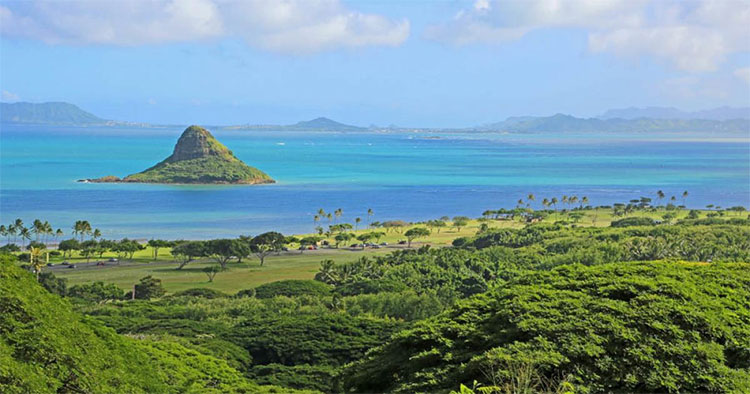Scientists discovered 'self-healing' super corals in Hawaii
A new study has documented the discovery of 'super corals' that seem to have adapted to the harsh waters of Kāne'ohe Bay in Hawaii.
While the battle may be fruitful, biologists discover that the new coral reef offers hope for effective resilience and conservation for decades to come.

The area of Kāne'ohe bay in Hawaii.
A report in a scientific journal, marine biologists at the University of Hawaii noted that the coral reefs of the Gulf of Kāne'ohe were devastated by human activity from the 1930s to 1970s. Compressed by waste water and pollution, this sea also suffers from warming temperatures and ocean acidification problems.
This culminated in 95% of bleached coral reefs and catastrophic damage. Later, in the late 1970s, the situation began to subside when wastewater was separated from the reef. In just 20 years, parts of coral reefs have recovered from 50 to 90%.
Often, as we often see elsewhere in the world, this level of pollution is enough to trigger a serious bleaching event that reefs can hardly recover. However, in the Gulf of Kāne'ohe , many corals seem to have gained tolerance to warmer and acidic waters.
It is still too early to say how "super corals" are common in other parts of the world, as well as whether they can recombine reefs ravaged in other areas on the planet or is not. However, research shows that there is still hope for world coral reefs.
"If we take the necessary steps now we will begin to see this reestablishment by coral throughout our lives, and our descendants will be able to witness the recovery. coral reefs in their time, ' said study author Christopher P. Jury of the Hawaii Marine Biology Institute.
- Australia strives to protect the world's largest coral reef
- Discover coral reefs that are as bright as a rainbow
- Discovering corals in depths 'never thought of'
- Coral - the oldest marine creature
- Video: Found strange octopus near Hawaii
- Coral is the longest living animal on Earth
- Again discovered UFO dancing in the sky of America
- Detect metal self-crack, forever not broken
- Detecting octopus 'super small' at sea
- Coral sperm bank
- What will happen if the entire coral reef on this Earth disappears?
- America develops super chips that help heal wounds
- Tsunami hit Hawaii
- Magical dolphin
 Surprised: Fish that live in the dark ocean still see colors
Surprised: Fish that live in the dark ocean still see colors Japan suddenly caught the creature that caused the earthquake in the legend
Japan suddenly caught the creature that caused the earthquake in the legend A series of gray whale carcasses washed ashore on California's coast
A series of gray whale carcasses washed ashore on California's coast Compare the size of shark species in the world
Compare the size of shark species in the world